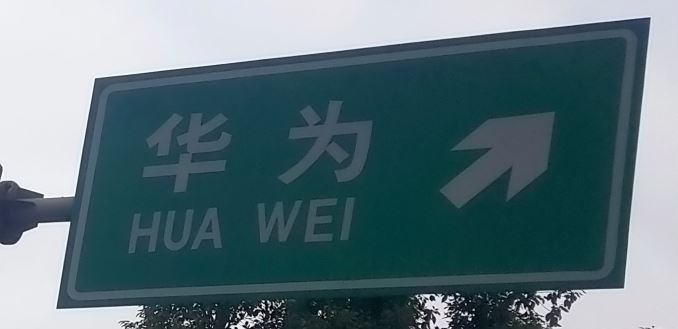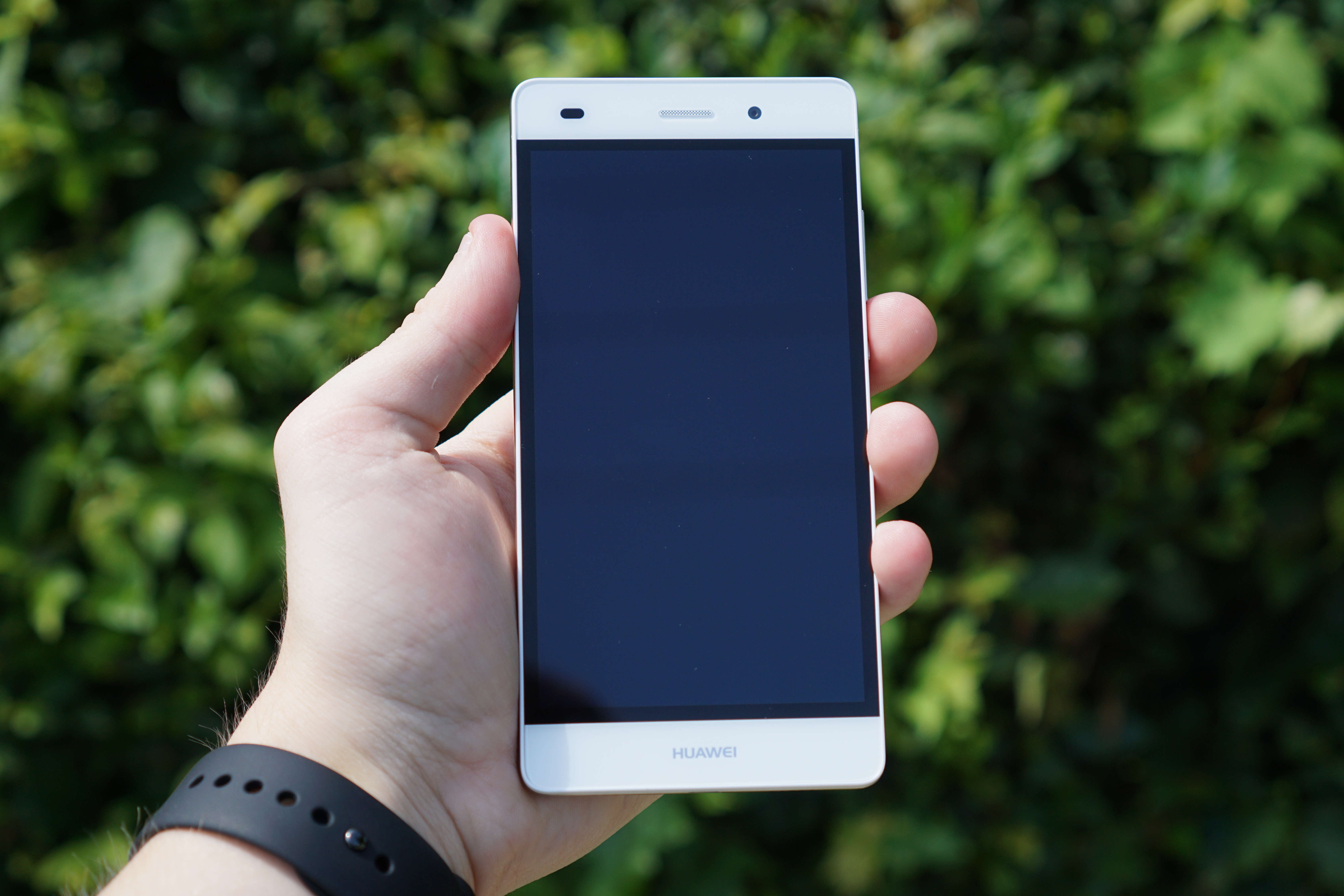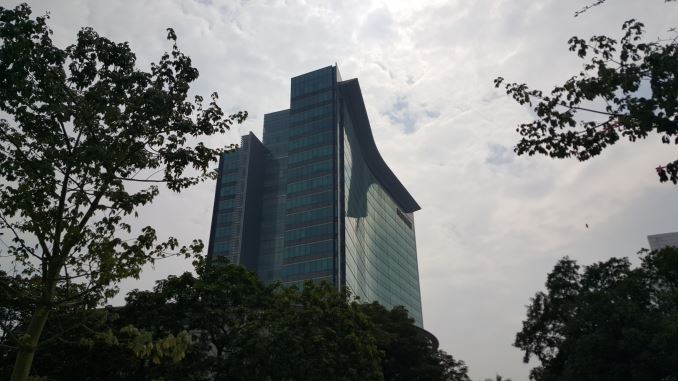China Calling: Huawei’s Media Tour, Kirin 950 and Why We Went
by Ian Cutress on December 4, 2015 8:00 AM EST
Sometimes the only way to develop a relationship with a technology manufacturer beyond a simple press release exchange with a media relations team, and the odd limited-time product review sample, is to meet the people responsible for designing, managing and marketing the products. Over the past two decades (almost), AnandTech has done this with numerous companies in the East and the West to great effect, to the point where our CES and Computex schedules are effectively packed to meet up with manufacturers we work closely with to update each other on perspectives in the industry as well as progress being made internally and externally. This November, we were given the chance to visit two of Huawei’s facilities and speak to a number of important individuals at both Huawei and HiSilicon.
Huawei, A Perspective
If you’ve followed AnandTech’s smartphone coverage of late, you might recall we attended the launch of Huawei’s P8 and P8 Max handsets, with Andrei reviewing the Mate S, the P8, the Mate 7, the Honor 6 and we’ve also covered devices like the Mate 2 briefly in the past before Huawei’s push to more western-style markets and devices.
For lack of a better phrase, others have said that ‘If Xiaomi is China’s version of Apple, then Huawei is China’s version of Samsung’, and if we go by sales figures, Huawei is now regularly competing (depending on which metric you use) alongside Xiaomi, Apple and Samsung to be the biggest smartphone provider in China in terms of shipments and market share. Huawei has devices, they have the clout to mass-produce almost on demand, but they are having issues expanding outside of their main consumer base, which is part of the reason why these media tours are taking place. Having read through the trips of several previous journalists, it was slightly amusing to hear that a common factor brought up in discussions is that the name Huawei seems to be difficult for westerners to pronounce if they’ve never heard it before (for clarification, try hwa-way or hugh-er-way). Interestingly, Huawei doesn’t see that as much of a barrier. I could certainly imagine members of my family seeing the name ‘Huawei’ and not having an idea how to pronounce it.
Nevertheless, Huawei’s circumstances in the global market has been one reason why we have wanted to get into deeper contact, especially as one of Huawei’s key technology assets is its custom silicon design capability for its SoCs. From their subsidiary company HiSilicon, whose roots can be traced back to the 90's, they produce chipsets designated ‘Kirin’, which implement ARM microarchitecture designs with other IP elements to form their own SoC, rather than relying on third-party designs such as from Mediatek, Qualcomm or Samsung. As part of our tour, we were present at the official media briefing (translated real-time from Chinese) for HiSilicon’s latest chipset, the Kirin 950. As mentioned in our announcement piece, this chipset is built on TSMC’s 16nm FinFET+ process and features quad A72 and quad A53 ARM processors as well as a new custom image signaling processor, Cat 6 LTE modem and dual memory controller support.
On the subject of SoC design, from the outside at least, if we were to consider Mediatek and Samsung both ‘Tier-1’ implementers of ARM’s microarchitecture designs, as opposed to Apple and Qualcomm who take the ISA and do their own µarch designs, then from the outside HiSilicon's Kirin lineup seems to be eying the former development. I prefixed that last sentence with ‘from the outside’ because that distinction is important – HiSilicon has been closed to any in-depth discussion of the design, and the devices we have tested so far do not necessarily produce anything new into the ecosystem. Either we are missing a trick in understanding the design from the top-down, or not understanding the design philosophy behind why Kirin exists as opposed to an off-the-shelf Mediatek or Qualcomm comparison. As further explained in part of our media tour, we spoke to a number of individuals at HiSilicon for the purpose of understanding their perspective, and hopefully educating ourselves and passing this information on to our readers.
The Purpose Of This Piece
To augment the more professional analysis we usually do at AnandTech, this piece is more of an overview of the Huawei media tour combined with a look into corporate strategy, how Huawei sees itself, and where the difficulties might lie in their goals. This piece is written in a more colloquial style than some of our other write-ups, but even if everything on this trip we saw was cherry picked (see the next page), there is still some value in breaking down a metaphorical company ‘black box’ where we have products coming out on one side and press releases/marketing on the other with some magic in-between. In the past we’ve done this with HQ visits to ASUS, ECS, MSI, Logitech and others, as well as a long series of interviews with Intel and ARM. The fact that this is a company based in China that isn’t called Foxconn suggests that even if all we see is ‘just another smartphone factory’(™), we can at least probe the corporate structure and find out what makes a company like Huawei tick, asking questions and generating a long-term dialogue between us.
Huawei’s main building, Shenzhen site












109 Comments
View All Comments
londedoganet - Friday, December 4, 2015 - link
Since you so nicely asked (that was sarcasm), here's comments for the first three pages. I got too irritated by that point to continue:-Page 1-
> I could certainly imagine members of my family seeing the name ‘Huawei’ and not having an idea to pronounce it.
"having an idea OF HOW to pronounce it"
> then from the outside HiSilicon's Kirin lineup seems to eying the former development.
"seems to eying"? "seems to BE eyeing", perhaps.
> the devices we have tested so far do not necessarily produce anything new into the ecosystem.
"produce anything new"? Was the author trying to say "introduce anything new"?
> an overview of the Huawei media tour combined a look into corporate strategy,
"combined WITH a look"
-Page 2-
> with a back-thought to large towns of 10,000+ people devoted to one factory
"with a back-thought"? I don't know what that means.
> the crucial part of accepting these trip offers is to talk and understand the people that matter most
"talk TO and understand the people"
> and as a journalist you either keep pumping out more of the same, rather than trying to be the best you can be and generate the sort of traffic that makes who you write for unique.
The "either" is missing an "or" clause, and is therefore redundant.
> so we were under no disillusion of the circumstances
"under no ILLUSION"
> VP of the Handset Product Line and the announcement of the Kirin 950.
I don't think you can be "VP of... the announcement of the Kirin 950", so the phrasing is awkward.
-Page 3-
> This dichotomy between ‘on-show corporate’ and ‘the general workforce’ is mirrored in companies around the world, to the extent that we also had lunch in a special canteen for guests with a background band as you entered.
While it can be taken from context (and the accompanying photo) that the "special canteen for guests" was at Huawei, some words to make the link explicit would have been better. For example, "This dichotomy between ‘on-show corporate’ and ‘the general workforce’ is mirrored in companies around the world, AND HUAWEI WAS NO EXCEPTION, to the extent that we also had lunch in a special canteen for guests with a background band as you entered."
> we were not allowed to take images inside of the facilities.
Images are usually "captured", while photos are usually "taken". This sentence mixes verbs in a non-standard manner.
> they all need to perform similar tests dictated international and industry standards.
"dictated BY international and industry standards"
cruzinforit - Friday, December 4, 2015 - link
It's also interesting to note that I think a few of these can be explained by the difference in how people from the UK talk compared to Americans. Since you know, Ian is from the UK it makes sense his manner of talking/typing might include british-english idiosyncrasies that we don't have in American english.phoenix_rizzen - Friday, December 4, 2015 - link
Nice theory, but that wouldn't explain why Canadian readers find it annoying since we align more with the Brits than the Yanks.Ian Cutress - Friday, December 4, 2015 - link
Actually, it was looked over by five different sets of eyes, minimum. It seems I missed out a number of prepositions and conjunctions, and everyone's brain filled them in. Naturally when several thousands of readers look over, a couple of errors becomes a debate about a series of style choices or idiosyncrasies. But nevertheless, we're taking points on board always, especially with a mix of styles from our editors.I've taken the steps and adjusted most of what you've listed here - a couple were a bad mix of two half-sentences or missing punctuation mixed with non-standard rules (serial comma, for example). Some I disagree with, because they are how I would say them in company (and colloquially correct here at least). But with most, I totally agree with you.
Thanks for the input, it is much appreciated. If any of our readers ever feel I've screwed up something linguistically, I'm happy to take an email as well (ian@anandtech.com). A few of our readers do already every now and again :)
-Ian
SunnyNW - Saturday, December 5, 2015 - link
I am a Big fan of Anandtech but to be honest I have noticed quite a few mistakes in recent articles. Some seem so obvious that I am very surprised that they are looked over. I hate to be That guy pointing out grammar mistakes and the like in comments so I don't. Just to add, these are definitely errors and not just author specific style choices or idiosyncrasies. Common examples seem to be duplicate words in a sentence, simple misspellings, and/or missing words. I love the content of this site therefore please just take this as Constructive criticism, the site produces Top Quality material so I would hate for editing to become an issue. I have been reading the site for years and at least to my awareness the errors seem to have become more prominent recently, such as in the past month or two.SunnyNW - Saturday, December 5, 2015 - link
My original comment had a few extra sentences but for some reason was being flagged as "Spam" and the site would not allow me to post. I started to randomly delete some sentences and it let me post but my post original comment was not harsh or "spam" in any way. It was very similar to what I posted above just with a few extra sentences none of which contained anything negative. I'm curious to know why my comment was being flagged as "spam" and what usually leads to this type of response, I've never encountered this before.s.yu - Saturday, December 5, 2015 - link
Indeed, a draft with lack of basic spelling check.phoenix_rizzen - Friday, December 4, 2015 - link
Oh, good, I'm not the only one that's irritated by this.londedoganet - Friday, December 4, 2015 - link
"hugh-er-way"? That soundsA) Nothing like how it would be pronounced in Mandarin (i.e. "hwa-way"), and additionally
B) More like the brand name for a laundry bleach ("Hue-Away, now with extra whitening power!")
Communism - Saturday, December 5, 2015 - link
The 2nd suggestion by Ian describes how the name would be pronounced in Beijing Dialect.